On January 7, 2026, USDA and HHS released the 2025-2030 Dietary Guidelines for Americans. The 2025-2030 DGAs recommend prioritizing high-quality protein, healthy fats, fruits, vegetables and whole grains, while avoiding highly processed foods and refined carbohydrates.
Read MoreThe Food Research and Action Center (FRAC) released their Afterschool Supper report that snapshots participation in October 2024. They found that afterschool supper participation has increased and that CACFP represents 50% of the daily participation.
Read MoreCan all ingredients in a smoothie be credited in the CACFP?
Read MoreThe Stanford Center on Early Childhood released a RAPID report that looks at how issues of food insecurity and hunger are affecting adults who provide care for young children. Their key finding: hunger is on the rise among child care providers.
Read MoreThe National CACFP Association (NCA) is proud to continue its annual scholarship program for the 2026 National Child Nutrition Conference (NCNC), taking place April 13–17, 2026, in Las Vegas, Nevada.
Read MoreWe are closely monitoring the potential government shutdown on October 1 and its impact on the CACFP. As your trusted partner, we’ll keep you informed with timely updates.
Read MoreOver 2,000 key stakeholders and professionals from the Child and Adult Care Food Program (CACFP) and Summer Food Service Program community will convene for a week of nutrition education and professional development at the 40th annual National Child Nutrition Conference (NCNC) in Las Vegas, Nevada, from April 13–17, 2026.
Read MoreRegistration for NCNC26 is now open! Get ready for our 40th Anniversary – five days of training, networking and fun.
Read MoreBeginning October 1, 2025, the Child and Adult Care Food Program (CACFP) will implement new regulations requiring limits on added sugars in breakfast cereals and yogurts served in child and adult care settings.
Read MoreThis October marks the inaugural Farm to CACFP Week, hosted by the National CACFP Association to celebrate the benefits of connecting child and adult care programs with local foods.
Read MoreUSDA announced $72.9 million in grant funding to states through the Specialty Crop Block Grant Program. The purpose of the SCBGP is to enhance the competitiveness of specialty crops, including fruits, vegetables, tree nuts, dried fruits, horticulture and nursery crops (including floriculture).
Read MoreThe U.S. Department of Health and Human Services (HHS) announced over $61 million in funding to over 290 Head Start programs to support nutrition services. Recipients will implement their nutrition initiatives over the next year, but this investment will have a long-term impact on Head Start families.
Read MoreOn September 9, 2025, the White House released the Make Our Children Healthy Again Strategy Report which outlines actions of the executive branch to address the childhood chronic disease crisis.
Read MoreThe USDA has released the cash-in-lieu value of USDA foods for 2025-2026. The value has increased by half a cent.
Read MoreUSDA published the CACFP reimbursement rates for fiscal year 2025-2026. Although the rates have increased, in most instances, reimbursement still remains too low for providers to sufficiently cover the cost of providing meals.
Read MoreExciting news! Head Start programs have an opportunity to access one-time supplemental funds to support nutrition services and healthy eating for enrolled children and families. You can use this funding for staff training on resources and educational opportunities to help your program improve outcomes for children and families and align with USDA requirements – like the CACFP!
Read MoreThe Child and Adult Care Food Program has new creditable foods listed on the USDA Food Buying Guide! If you are new to the FBG, this interactive tool allows for easy display, search, and navigation of food yield information. In addition, users can compare yield information, create a favorite foods list, and access tools, such as the Recipe Analysis Workbook (RAW) and the Product Formulation Statement Workbook.
Read MoreThe Child and Adult Care Food Program community asked for more Spanish resources to be available on the National CACFP Sponsors Association website and we heard you! Available now in Spanish are more resources to help sponsors and providers with meal pattern requirements, best practices, and so much more!
Read MoreServing meals to young people year-round benefits children, families, and care providers. To do this, many providers transition from operating the USDA Child and Adult Care Food Program (CACFP) At-Risk Afterschool (ARAS) during the school year to the Summer Food Service Program (SFSP) while school is out. For an overview of the main differences between SFSP and CACFP ARAS, see the comparison chart below.
Read MoreNCA understands that the end of flexibilities will cause challenges for many CACFP sponsors and providers and we commend your continued commitment to providing nutritious meals and snacks to the children or adults in your care. In preparation for the end of the additional reimbursement, we have collected the following resources to help you successfully provide meals even if your available budget decreases.
Read MoreCan all ingredients in a smoothie be credited in the CACFP?
Read MoreCan a parent or guardian supply a meal component for their infant in the infant meal pattern?
Read MoreCould the crust of a chicken pot pie credit as the grains component?
Read MoreAre juice cocktails creditable in the CACFP?
Read MoreIs raw cow’s milk creditable in the CACFP?
Read MoreDoes mixing fresh fruits into yogurt count towards added sugars?
Read MoreExciting news! Head Start programs have an opportunity to access one-time supplemental funds to support nutrition services and healthy eating for enrolled children and families. You can use this funding for staff training on resources and educational opportunities to help your program improve outcomes for children and families and align with USDA requirements – like the CACFP!
Read MoreThe Child and Adult Care Food Program has new creditable foods listed on the USDA Food Buying Guide! If you are new to the FBG, this interactive tool allows for easy display, search, and navigation of food yield information. In addition, users can compare yield information, create a favorite foods list, and access tools, such as the Recipe Analysis Workbook (RAW) and the Product Formulation Statement Workbook.
Read MoreThe Child and Adult Care Food Program community asked for more Spanish resources to be available on the National CACFP Sponsors Association website and we heard you! Available now in Spanish are more resources to help sponsors and providers with meal pattern requirements, best practices, and so much more!
Read MoreServing meals to young people year-round benefits children, families, and care providers. To do this, many providers transition from operating the USDA Child and Adult Care Food Program (CACFP) At-Risk Afterschool (ARAS) during the school year to the Summer Food Service Program (SFSP) while school is out. For an overview of the main differences between SFSP and CACFP ARAS, see the comparison chart below.
Read MoreNCA understands that the end of flexibilities will cause challenges for many CACFP sponsors and providers and we commend your continued commitment to providing nutritious meals and snacks to the children or adults in your care. In preparation for the end of the additional reimbursement, we have collected the following resources to help you successfully provide meals even if your available budget decreases.
Read MoreThe Food Research and Action Center (FRAC) released their Afterschool Supper report that snapshots participation in October 2024. They found that afterschool supper participation has increased and that CACFP represents 50% of the daily participation.
Read MoreThe Stanford Center on Early Childhood released a RAPID report that looks at how issues of food insecurity and hunger are affecting adults who provide care for young children. Their key finding: hunger is on the rise among child care providers.
Read MoreUSDA released their second report on the Study of Nutrition and Activity in Child Care Settings (SNACS-II), which follow their first in 2022. SNACS-II uses data from program year 2022-23 to assess how well children’s diets and CACFP meals align with the Dietary Guidelines for Americans.
Read MoreA recent study by our partners at Child Care Aware® of America reveals that parents across the nation are struggling to find affordable, high-quality child care. The survey shows that parents are piecing together multiple care arrangements and facing challenges balancing work and caregiving.
Read MoreThe CDC’s 2025 Early Childhood Nutrition Report gives us a big-picture look at how young children in the U.S. are eating and growing. It focuses on kids from birth to age 5 and shares important facts about breastfeeding, starting solid foods, eating healthy and how states support good nutrition.
Read MoreThe “Characteristics of Emergency Shelters Participating in the CACFP” study by USDA seeks to better understand the characteristics of CACFP emergency shelters, who they serve, how CACFP fits into their operations, and their challenges with CACFP. The study was conducted in 2023 and collected data from 242 emergency shelters that participate in CACFP in Fiscal Year 2023.
Read More
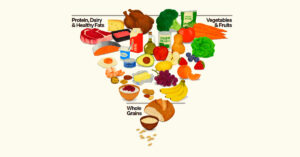
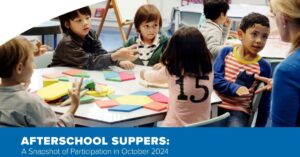




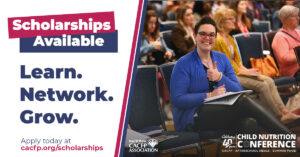

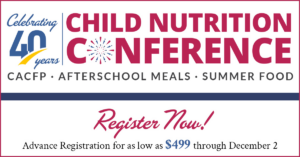

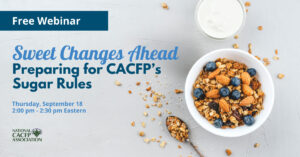
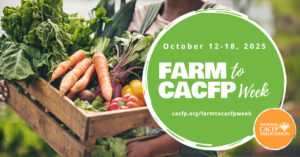
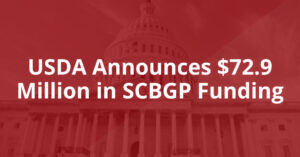

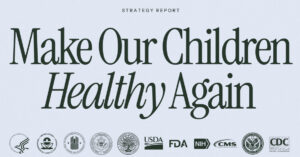

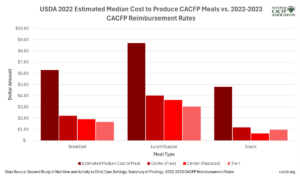

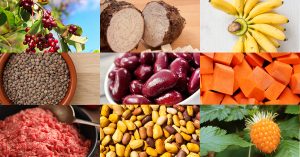

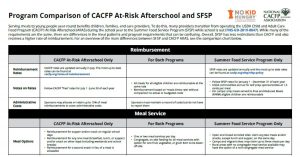

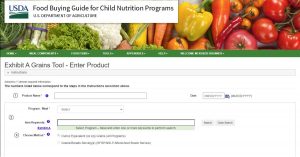

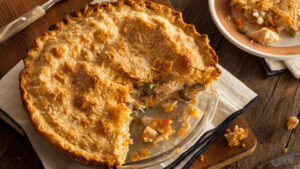





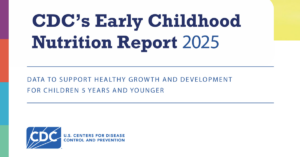





NCA Response – USDA Reorganization Plan
In July, USDA announced a Department Reorganization Plan which includes the consolidation of the FNS Regional Offices from seven to five hubs over the next two years. NCA has submitted comments to USDA on the reduction in force at the national office, as well as the relocation and reduction in the number of FNS regions.
Read More